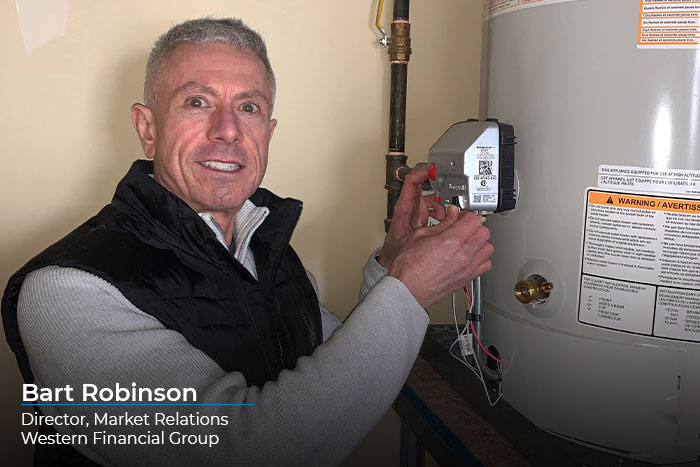How do I maintain and care for my hot water tank?

Bart Robinson is our Director of Market Relations at Western Financial Group.
Your hot water tank can last around a decade and it can be easy to forget to maintain it. But there are a few quick and easy things you can do to keep it running efficiently and extend its life. Hot water tank maintenance should be done once a year.
Inspect the pressure relief valve
The pressure relief valve is on the side or top of the hot water tank. It opens when the pressure gets too high inside the tank.
- Put a bucket under the discharge pipe.
- Lift the pressure-relief valve lever gently.
- If water does not come out, the valve needs to be replaced.
- To replace the pressure relief valve, turn the water off and drain the tank, unscrew the pipe and the old pressure relief valve, and screw in the new valve after you have wrapped the threads in sealant tape.
- Close the cold water supply valve that brings water into the hot water tank.
- Turn the hot water on at a faucet to release the pressure inside the tank and leave it on.
- Turn the power off at the panel if your water heater is electric or turn the gas control dial off if it is a gas hot water tank.
Inspect the anode rod
- Drain a few litres of water.
- Unscrew the anode rod using a 1 1/16” socket. If it is covered with calcium, 6” or more of the steel wire is showing, or it is less than ½" thick, replace it, making sure to wrap the threads in Teflon tape.
Remove sediments from the hot water tank
- Drain the hot water tank to flush out the sediments from the bottom. Draining about a quarter of the tank should be enough to remove the sediments. Make sure to drain the tank slowly and until the water runs clear.
- Sediments in the hot water tank reduce its efficiency and increase your utility bill.
Restart the hot water tank
- Open the shutoff valve while the hot water is running at a faucet.
- Turn the power back on and light the pilot light.
Set the temperature
- Adjust the temperature to 120 degrees Fahrenheit (49 degrees Celsius) to prevent scalding, reduce the buildup of sediment and lower your utility bill.
- Turn the temperature on your water heater to the lowest setting if you will not be home for a few days
Insulate the water heater
- Use 3/8“ foam pipe insulation to cover the hot and cold water pipes.
- New hot water tanks are already insulated, but if you have an older one you can wrap it in R-4.5 foil bubble wrap. If you have an oil or gas water heater, do not cover the top. Do not cover the valve or temperature controls.



.jpg?300x300)